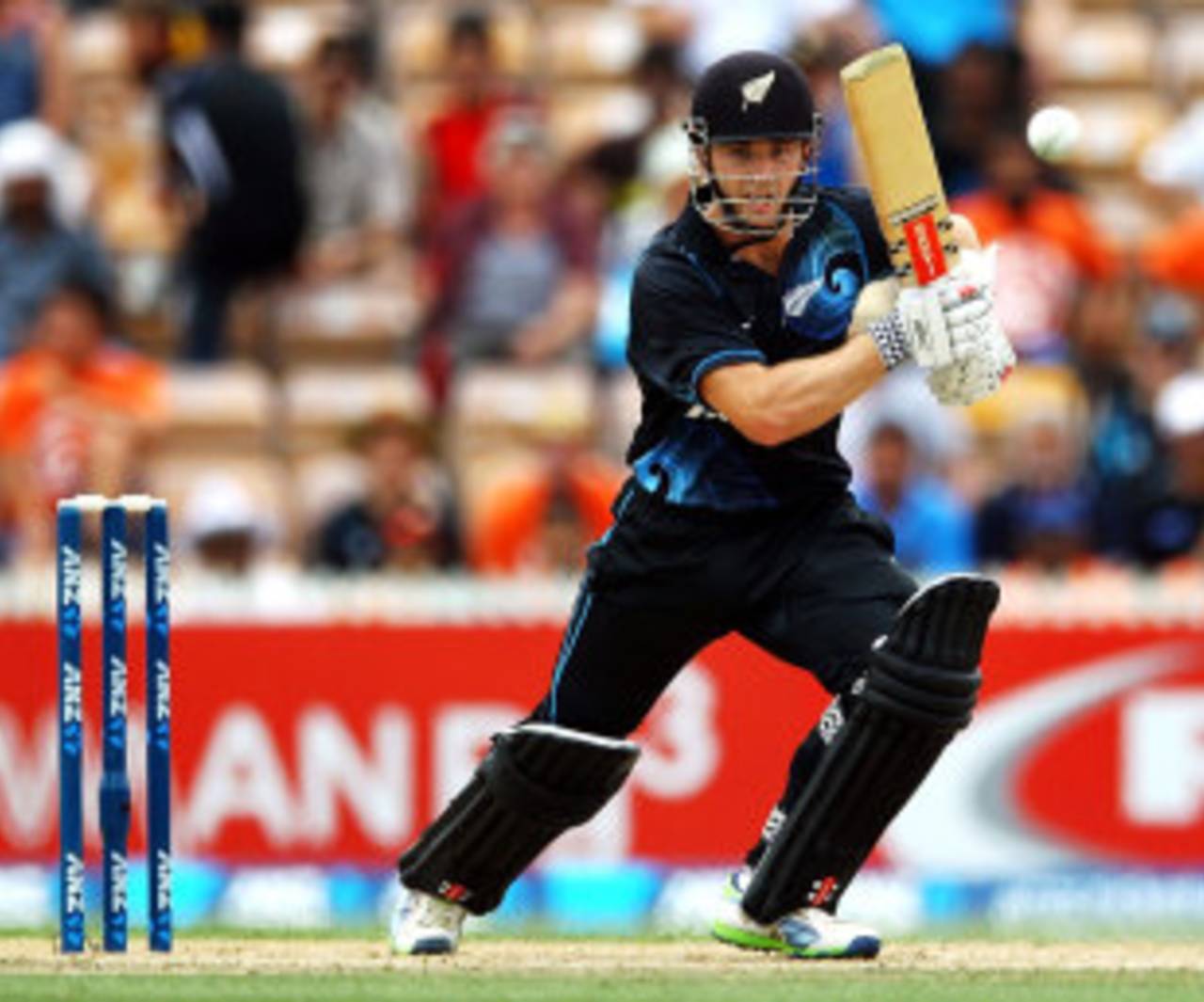The difference in the first ten overs
Stats highlights from the fourth ODI in Hamilton, which New Zealand won to seal the series

Kane Williamson needs 79 more runs in the last match to become the highest run-scorer for New Zealand in a bilateral ODI series • Getty Images
- New Zealand's seven-wicket win means they have an unbeatable 3-0 lead in the series, thus giving them their first series victory in a bilateral home series, against an opposition other than Bangladesh and Zimbabwe, since 2008-09. In that season they would beaten West Indies 2-1, with two games being washed out. (They also beat England 3-1 in February 2008.) Since then they lost at home to India, Australia, Pakistan, South Africa and England, and drew 2-2 against West Indies earlier this season. (Click here for the full list.) It's also New Zealand's first win in a series of five or more matches since that 2008-09 victory against West Indies.
| Overs | Team | Runs/ balls | Dots | 4s/ 6s | Average | Run rate |
| 1-10 | New Zealand | 214/ 240 | 158 | 30/ 2 | 35.67 | 5.35 |
| India | 175/ 240 | 169 | 17/ 7 | 29.16 | 4.37 | |
| 11-40 | New Zealand | 685/ 720 | 327 | 56/ 14 | 57.08 | 5.70 |
| India | 704/ 720 | 348 | 61/ 17 | 44.00 | 5.86 | |
| 41-50 | New Zealand | 258/ 181 | 66 | 17/ 15 | 28.67 | 8.55 |
| India | 258/ 181 | 66 | 22/ 10 | 23.45 | 8.55 |
S Rajesh is stats editor of ESPNcricinfo. Follow him on Twitter